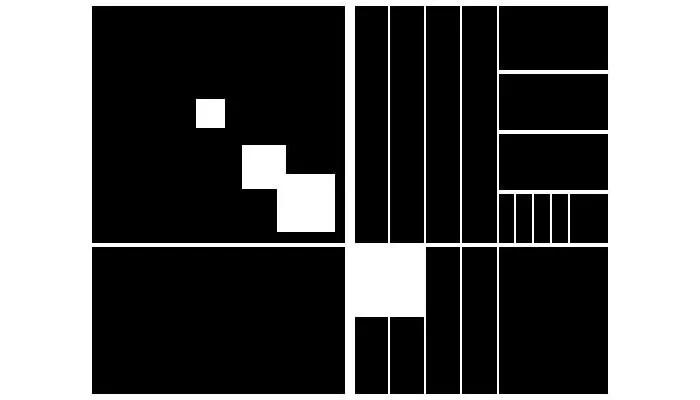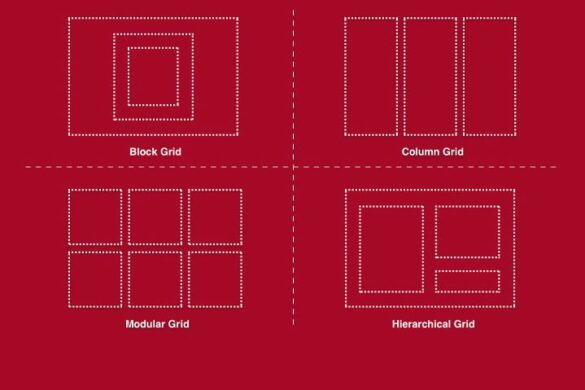Table of Contents
Build on what you know and become a better graphic designer! Here’s how! It’s easy to get trapped in a rut as a designer, especially if you identify a specialization or style that you excel in. Before you know it, you’ve established a reputation for a particular kind of work, and your design portfolio is beginning to appear a little… samey.
So, how can you give your work a fresh dimension and break out from the mold? Here are six doable and practical techniques to improve your graphic design talents.
01. Study design theory

Graphic design is a career rather than a craft. Of course, you can learn a lot by doing, and there are many ways to enter the design world without having a degree. Nonetheless, at the end of the day, a thorough grasp of the discipline’s principles, such as grid theory, color theory, typography, and the golden ratio, is essential.
This is when a formal design education proves its worth to many designers. There are many possibilities, ranging from entire university degrees to concentrated short courses to distant learning settings, and there are even some great free graphic design classes if you’re constrained for cash.
02. Learn how to get more from feedback
Dealing with criticism is one of the most emotionally exhausting things we can do as artists. Nonetheless, if you want to develop your talents, it’s a must.
Positive feedback is excellent when it’s well-deserved, but it doesn’t provide you with much more than an exaggerated sense of self-worth. It could potentially be harmful to your further progress if it’s unjustified and knee-jerk.

Whether you’re sharing your ideas on Dribbble, Behance, Facebook, or simply with a few chosen friends or coworkers, it’s critical to choose your words carefully to elicit the most constructive critique.
For instance, rather than just asking, “What do you think?”, it’s best to ask specific questions rather than general ones to avoid generalized answers such as ‘It’s amazing’. By implementing specific structured questions such as, ‘This is the brief; do you believe I’ve met it?’ or ‘Which aspect of the design did your eye first focus on?’, people are able to constructively criticize your work without coming across as an obnoxious troll.
Giving input on other designers’ work may also be beneficial, as it can help you empathize and strengthen your critical abilities in ways that you can apply to your own work.
03. Start a side project
In your 9-to-5, doing the same thing over and over again can cause your abilities to get stale and your excitement to wane. So, if you want to stay motivated to learn new things, establish your own side project.
It’s often simpler to pick up a new design talent if you need it to do something specific, especially if it’s something personal to you. As a result, a passion project might lead to you learning new skills you’d never considered before, without the type of self-discipline required for formal study.
04. Experiment
This is a where the phrase in the world of digital startups: ‘Fail quickly’ comes to play. Indeed, the only and best way to figure out what works best and what you’re strong at is to test out a lot of different experimental design concepts and put them into reality.

When it comes to experimenting new media, skills, and approaches, it’s an approach graphic designers can benefit from. So, instead of utilizing the same fonts, colors, layouts, or software for each design project, change it up a little and try something new.
Include a wild new font. Instead of 2D, try 3D. Get your hands on some of the greatest digital art software available. Instead of using a pencil, sketch using a ballpoint pen or charcoal. See what happens if you break a rule. Consider how this design might have been addressed in the past. Instead of pictures, use illustrations. Increase the quantity of whitespace by twofold. In other words, toss tradition out the window and see what happens.
The majority of the time, whatever lands will in a shamblesbut every now and again, you’ll strike gold. Even if you don’t, the act of experimenting will help clear your mind, allowing you to recognize which of your creative talents are in need of improvement and why.
05. Talk to other designers
Interacting with a lot of different designers is one of the finest ways to grow as a designer. However, this might be challenging at times. You may be the only designer in a large corporation, a freelancer working from home, or a member of a two- or three-person firm.

In the end, they’re all just excuses. There are several simple methods to meet and talk with other creatives.
Attend events, conferences, and gatherings. Use social media to contact individuals. Look into forums. Make new acquaintances. Let’s talk about design. Problems, issues, and questions should all be discussed. Work together on a project. Send an email to a designer whose work you appreciate. Request that they serve as your mentor. Participate in their podcast or establish your own to interview your idols.
Simply said, force yourself to go out there. You’ll meet some interesting folks and learn more than you ever imagined.
06. Read a book

Even if you have a degree, you never stop studying since, as the phrase goes, “education is for life.” So, the next time you’re on a lengthy train ride, turn off your phone and snuggle up with a nice graphic design book. It will undoubtedly be a better use of your time than growling at trolls on Twitter or scrolling through Instagram’s food feeds.
There are several books to choose from that are both instructive and motivating.







Add your first comment to this post